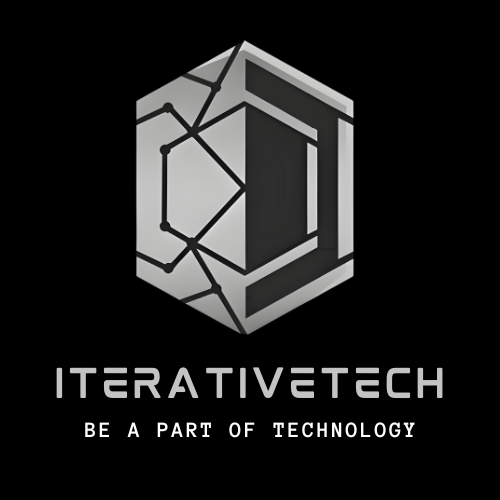Introduction
Mixed Reality (MR) is transforming how we interact with websites, seamlessly blending real-world environments with digital content to create immersive experiences. As this technology evolves, next-gen websites are incorporating MR to deliver enhanced user interactions unlike anything seen before. This fusion not only boosts engagement but also improves usability, making complex information easily accessible. In this blog, we’ll explore how mixed reality is revolutionizing website design and pushing the boundaries of user experience with innovative, real-time interactions.
Evolution of Website Design with Mixed Reality
Understanding Mixed Marilyn
Mixed reality (MR) blends the real world with digital elements, creating an environment where physical and virtual objects coexist and interact in real time. This technology, which encompasses both augmented reality (AR) and virtual reality (VR), offers immersive experiences that go far beyond the flat, two-dimensional interfaces of traditional websites. By overlaying digital content onto the real world or simulating entirely new worlds, mixed reality provides a novel platform for web design and user interaction.
The Impact of Mixed Reality on User Experience
Imagine shopping online not just with images and videos, but by virtually trying on clothing or seeing how furniture looks in your living room before making a purchase. Mixed reality enhances user experience by making it more interactive, engaging, and informative. This technological innovation allows users to:
- Interact with products in a 3D space, manipulating them to see different angles and features.
- Experience service scenarios virtually before committing, such as touring a hotel room or attending a virtual event.
- Receive real-time information and updates overlaid onto their physical surroundings, enhancing understanding and decision-making.
These advancements lead to deeper user engagement, increased satisfaction, and higher conversion rates for businesses.
Implementation of Mixed Reality in Next-Gen Websites
Interactive 3D Models and Animations
Incorporating interactive 3D models and animations into websites is one of the most striking applications of mixed reality. This approach not only captivates users but also offers them a deeper understanding of the product or service. For instance, automotive companies can implement MR to allow customers to explore different car models, customize features, and even simulate driving experiences directly from their browser. Real estate websites can benefit too, enabling potential buyers to your properties virtually, observing every detail as if they were physically present.
By understanding and implementing these mixed reality features, next-gen websites can offer significantly enhanced user experiences that are both immersive and highly engaging. Through interactive 3D models, immersive storytelling, and personalized interactions, websites can captivate users and maintain their attention like never before, marking a transformative shift in how we perceive and interact with the digital world.
Advantages of Mixed Reality in Website Design
Mixed reality (MR) is reshaping the landscape of digital interaction, particularly in the realm of website design. This innovative technology offers several compelling advantages that enhance both the aesthetic appeal and functionality of web platforms.
Enhanced User Engagement
Mixed reality transforms user engagement by making it more interactive and immersive. Traditional websites often struggle to captivate users’ attention for extended periods. However, MR integrates virtual elements into real-world settings, creating a compelling environment that encourages users to explore further. For instance, an e-commerce site could use MR to allow customers to virtually try on clothing or see how furniture would look in their home before making a purchase. This level of interaction not only boosts the time spent on the site but also enhances the overall user experience, leading to higher conversion rates and customer satisfaction.
Improved Accessibility and Inclusivity
The integration of mixed reality in website design also significantly boosts accessibility and inclusivity. By overlaying additional context or information, MR can make websites more navigable and easier to understand for people with disabilities. For example, visual or auditory MR aids can help people who are visually impaired or hard of hearing gain better access to web content. Additionally, MR can bridge language barriers with real-time translation features overlaid on the user’s field of view, making content more accessible to a broader audience worldwide.
Boost in Brand Visibility and Recognition
Adopting mixed reality can greatly enhance a brand’s visibility and market presence. MR offers unique marketing opportunities that can set a brand apart from competitors. Interactive MR experiences are not only memorable but also likely to be shared across social networks, thereby increasing organic reach. Furthermore, by leveraging MR, brands can demonstrate their commitment to innovation, attracting and retaining tech-savvy consumers who are eager to engage with cutting-edge technology.
Challenges and Considerations in Mixed Reality Website Development
While mixed reality offers exciting opportunities for website design, its implementation comes with a set of challenges that developers and designers must navigate carefully.
Technical Constraints and Compatibility Issues
Implementing mixed reality into websites involves complex technical challenges and compatibility issues. First, not all users have access to MR-compatible devices, which limits the reach of MR-enhanced websites. Developers must ensure that their websites are still functional and appealing when accessed on non-MR devices. Moreover, MR development requires expertise in both traditional web technologies and the latest MR frameworks and tools, which can be a barrier for teams without specialized knowledge. Additionally, there are performance considerations, as MR applications can be resource-intensive, potentially leading to slower load times and diminished user experience on less capable devices.
User Privacy and Data Security Concerns
Mixed reality applications often collect and process large amounts of personal data to create highly tailored user experiences. This raises significant privacy and security concerns that developers must address. For example, MR systems that use cameras and sensors to understand their environment may inadvertently capture sensitive information. Ensuring that this data is collected, stored, and processed securely is crucial to maintaining user trust and complying with data protection laws. Developers need to implement robust encryption methods, secure data storage solutions, and transparent privacy policies that inform users about how their data will be used.
Balancing Functionality with Aesthetics in Mixed Reality Design
Creating a successful mixed reality experience on a website necessitates a delicate balance between functionality and aesthetics. While it’s important to design visually appealing MR elements, they should not overwhelm or distract from the core purpose of the website. Designers must ensure that MR enhancements are intuitive and add value to the user experience rather than serving as mere technological novelties. This involves thoughtful integration of MR components that complement the site’s content and help achieve its overall objectives. Moreover, MR design should be adaptable to different user environments, ensuring a consistent and cohesive experience across various settings and conditions.
Future Trends and Predictions in Mixed Reality Websites
Mixed reality (MR) is dramatically transforming the landscape of website design and user interactions. As we look towards the future, several trends and predictions suggest an even more integrated and immersive web experience. These emerging advancements promise not only to enhance the visual and interactive dynamics of websites but also signify major shifts in how users will engage with digital content.
Integration of AI and Machine UnLearning in Mixed Reality Experiences
One of the most significant advancements in the realm of MR enabled websites is the integration of artificial intelligence (AI) and machine learning (ML). AI and ML are not merely buzzwords but are pivotal technologies that drive the customization and responsiveness of mixed reality environments. Here are several ways in which AI and ML are set to revolutionize MR website experiences:
- Personalization: AI algorithms analyze user behavior and preferences to tailor the MR environment for a more personalized experience. This could mean dynamically changing interfaces or suggesting content and actions aligned with user interests.
- Contextual Interaction: Machine learning models can provide context-aware interactions by understanding the environment around the user. This capability will allow MR websites to offer real-time adjustments in virtual elements, enhancing the connection between the real world and digital content.
- Predictive Analytics: By leveraging data on user actions and engagements within the MR environment, AI can predict future behavior and preferences, leading to more intuitive and proactive user experiences.
- Enhanced Accessibility: AI will also play a crucial role in making MR experiences more accessible to people with disabilities, offering customized alterations to the interface that accommodate various needs and capabilities.
The integration of AI and ML into MR websites is not just about creating slick interfaces and interactions; it’s about making these digital experiences more human-centric and responsive to individual users’ needs.
Expansion of Mixed TReality Earlyon Websites to Other Digital PPlatforms
The potential of mixed reality is not confined to traditional web browsing on computers or mobile devices. The technology is set to expand its reach across multiple digital platforms, promising a unified MR experience that stretches beyond conventional boundaries:
- Mobile Applications: As smartphones integrate more advanced MR capabilities, mobile apps will begin to include richer, more immersive experiences traditionally seen on websites.
- Gaming Platforms: Mixed reality is poised to redefine gaming, providing seamless integration between real-world environments and gaming scenarios, thereby enhancing the immersive experience.
- Educational Tools: Educational platforms are adopting MR to provide interactive and engaging learning experiences, where theoretical knowledge can be visualized and practiced in a mixed reality setting.
- E-commerce: Online shopping will transform as MR allows consumers to try products virtually before purchasing.
As MR technology becomes more sophisticated and accessible, its applications across varied digital platforms will serve diverse industries and purposes, opening new avenues for both personal and commercial engagements.
The emerging trends in MR website design and functionality herald a new era in digital interaction, emphasizing a blend of complete immersion, personalization, broadened accessibility. As we continue to explore the capabilities of mixed reality, the boundaries between our physical and digital worlds are set to blur, crafting experiences that are as enriching as they are exciting.
Conclusion
Mixed reality is not just reshaping the world of gaming and entertainment; it is also setting new standards in website design. By integrating the real world with virtual elements, next-gen websites are offering experiences that are both immersive and interactive. This revolutionary approach promises to enhance user engagement, driving more profound interactions and heightened satisfaction. As technology continues to advance, businesses will find immense value in adopting mixed reality, making their online presence not only more dynamic but also more pertinent in the digital age.



